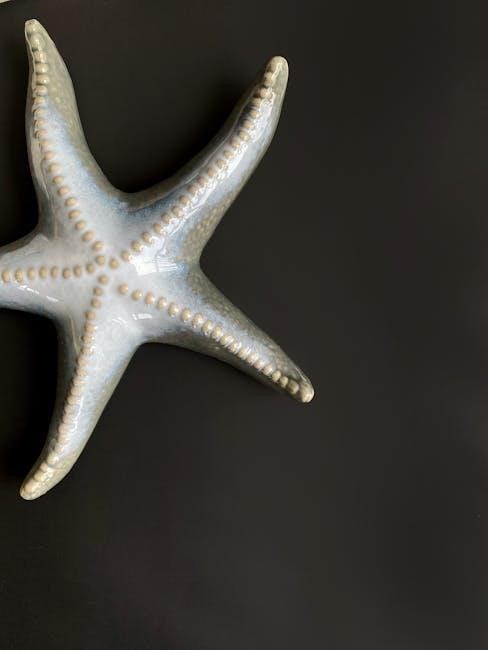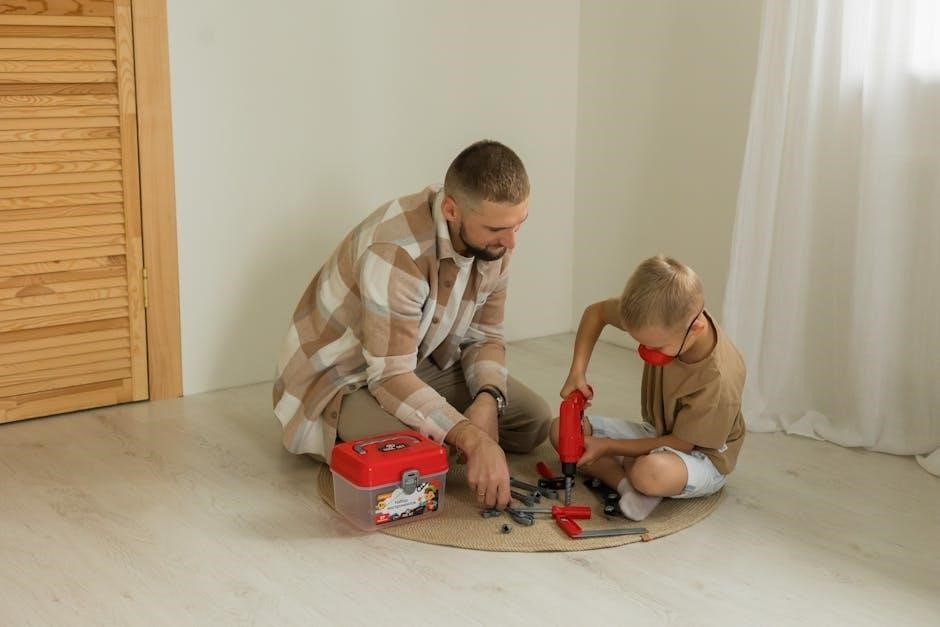star trek collectibles price guide
Category : Guide
Star Trek collectibles have become a vibrant market‚ with fans seeking rare and unique items. Price guides‚ like those from iGuide‚ offer detailed valuations for over 5‚000 collectibles‚ from action figures to trading cards. Recent sales on platforms like eBay highlight the growing value of items such as Klingon Bird of Prey models and limited-edition toys.

Action Figures
Action figures are a popular category in Star Trek collectibles‚ with characters from various series. Prices range from $50 to $300‚ with rare figures like Spock commanding higher values. Quantum Mechanix offers detailed designs‚ while Playmates Generations sets remain sought after. Condition and rarity significantly impact pricing‚ making them valuable additions for collectors.
The Original Series
Collectibles from Star Trek: The Original Series are highly sought after‚ with action figures being particularly popular. Figures of iconic characters like Captain Kirk‚ Mr. Spock‚ and Dr. McCoy are among the most valuable. Prices for these figures can range from $50 to $300‚ depending on their condition and rarity. Rare variants‚ such as the Quantum Mechanix Spock figure‚ can fetch even higher prices due to their detailed craftsmanship and limited production runs.
The Original Series also boasts a wide range of other collectibles‚ including rare trading cards and model ships. For instance‚ the USS Enterprise NCC-1701 model is a favorite among fans‚ with prices varying based on scale and detail. Additionally‚ vintage toys‚ such as the Klingon Bird of Prey and Romulan Bird of Prey models‚ have seen a significant increase in value over the years.
For collectors‚ condition plays a crucial role in determining the value of these items. Mint-condition figures with original packaging can command premium prices‚ while loose or damaged items may sell for significantly less. Platforms like eBay and specialized price guides‚ such as the one from iGuide‚ provide valuable insights into recent sales and market trends‚ helping collectors make informed decisions.
Overall‚ The Original Series collectibles remain a cornerstone of the Star Trek memorabilia market‚ offering something for every type of collector‚ from casual fans to serious investors. Whether it’s action figures‚ model ships‚ or rare cards‚ these items continue to captivate audiences and appreciate in value over time.

The Next Generation
Star Trek: The Next Generation collectibles are highly popular among fans‚ with action figures and model ships being top choices. Action figures of iconic characters like Captain Jean-Luc Picard‚ Data‚ and William Riker are particularly sought after; Prices for these figures range from $50 to $200‚ depending on their condition and rarity. Rare variants‚ such as the Patrick Stewart-signed Captain Picard figure‚ can fetch up to $500 due to their exclusivity and autograph value.

Model ships from The Next Generation are also highly prized‚ with the USS Enterprise NCC-1701-D being a fan favorite. Detailed replicas of this ship‚ especially those produced by companies like Quantum Mechanix‚ can sell for $200 to $500. Additionally‚ rare trading cards featuring key moments from the series have seen a surge in value‚ with complete sets commanding prices between $100 and $300.
The condition of these collectibles plays a significant role in their value. Mint-condition items with original packaging or certification often sell for premium prices‚ while loose or damaged items may be significantly cheaper. Online marketplaces like eBay and specialized price guides‚ such as the one from iGuide‚ provide valuable insights into recent sales and market trends‚ helping collectors determine fair prices.
Overall‚ The Next Generation collectibles offer a wide range of options for fans and investors alike‚ with their value continuing to grow as the series remains a beloved part of pop culture history.
Deep Space Nine
Star Trek: Deep Space Nine collectibles are highly sought after by fans‚ offering a diverse range of items that celebrate the series’ unique characters and storylines. Action figures of iconic characters like Captain Benjamin Sisko‚ Gul Dukat‚ and Quark are particularly popular‚ with prices ranging from $50 to $150 depending on their condition and rarity. Rare variants‚ such as figures with exclusive accessories or packaging‚ can command higher prices‚ especially if they are still sealed.
Model ships from Deep Space Nine are also highly prized‚ with the Deep Space Nine station itself being a fan favorite. Detailed replicas of the station and ships like the Dominion Warships can sell for $100 to $300‚ depending on their scale and complexity. Additionally‚ trading cards featuring key moments from the series‚ such as the Dominion War or the introduction of the USS Defiant‚ have seen a surge in value. Complete sets of these cards can fetch between $80 and $200‚ with rare cards featuring autographs or foil designs commanding even higher prices.
The value of these collectibles is heavily influenced by their condition and rarity. Mint-condition items with original packaging or certification often sell for premium prices‚ while loose or damaged items may be significantly cheaper. Online marketplaces like eBay and specialized price guides provide valuable insights into recent sales and market trends‚ helping collectors determine fair prices for their Deep Space Nine treasures.
Voyager
Star Trek: Voyager collectibles are a favorite among fans‚ offering a wide array of items that capture the essence of the series’ epic journey. Action figures of iconic characters like Captain Kathryn Janeway‚ Chakotay‚ and the Doctor are highly sought after‚ with prices ranging from $40 to $120 depending on their condition and rarity. Rare variants‚ such as figures with exclusive accessories or packaging‚ can command higher prices‚ especially if they are still sealed.
Model ships from Voyager are also highly prized‚ with the USS Voyager NCC-74656 being a standout piece. Detailed replicas of the ship‚ featuring intricate designs and paintwork‚ can sell for $150 to $350‚ depending on their scale and complexity. Additionally‚ trading cards featuring key moments from the series‚ such as the crew’s encounters with the Borg or their journey through the Delta Quadrant‚ have seen a surge in value. Complete sets of these cards can fetch between $70 and $180‚ with rare cards featuring autographs or foil designs commanding even higher prices.
The value of these collectibles is heavily influenced by their condition and rarity. Mint-condition items with original packaging or certification often sell for premium prices‚ while loose or damaged items may be significantly cheaper. Online marketplaces like eBay and specialized price guides provide valuable insights into recent sales and market trends‚ helping collectors determine fair prices for their Voyager treasures.

Enterprise
Star Trek: Enterprise collectibles are highly sought after by fans of the series‚ which explores the early days of humanity’s ventures into deep space. Action figures of key characters like Captain Jonathan Archer‚ T’Pol‚ and Trip Tucker are popular among collectors‚ with prices ranging from $30 to $100 depending on their condition and rarity. Rare variants‚ such as figures with exclusive accessories or packaging‚ can command higher prices‚ especially if they are still sealed.
Model ships from the series‚ particularly the NX-01 Enterprise‚ are also highly prized. Detailed replicas of the ship‚ featuring intricate designs and paintwork‚ can sell for $100 to $300‚ depending on their scale and complexity. Additionally‚ trading cards featuring key moments from the series‚ such as the crew’s encounters with the Xindi or their journey through the Delphic Expanse‚ have seen a surge in value. Complete sets of these cards can fetch between $50 and $150‚ with rare cards featuring autographs or foil designs commanding even higher prices.
The value of these collectibles is heavily influenced by their condition and rarity. Mint-condition items with original packaging or certification often sell for premium prices‚ while loose or damaged items may be significantly cheaper. Online marketplaces like eBay and specialized price guides provide valuable insights into recent sales and market trends‚ helping collectors determine fair prices for their Enterprise treasures.
Model Ships
Star Trek model ships are highly detailed replicas of iconic vessels‚ such as the Klingon Bird of Prey and USS Enterprise. These models are crafted with precision‚ featuring intricate designs and paintwork. Prices range from $100 to $300‚ depending on scale and complexity. Rare or limited-edition ships‚ like the Romulan Bird of Prey‚ can command higher prices due to their exclusivity and demand among collectors.
Klingon Bird of Prey
The Klingon Bird of Prey is one of the most sought-after model ships among Star Trek collectors. Known for its sleek‚ angular design‚ this vessel has been featured prominently in various Star Trek series and films‚ making it a favorite among fans. The model ships are available in different scales‚ ranging from small desktop displays to larger‚ more detailed replicas.
Prices for Klingon Bird of Prey models vary depending on size and complexity. Smaller models‚ such as those in the 4-6 inch range‚ typically cost between $50 and $100. Larger‚ more intricate versions‚ including those with lighting and paintwork‚ can range from $200 to $500. Limited-edition releases often command higher prices due to their exclusivity.
Collectors particularly value models that include additional features‚ such as removable panels‚ detailed interiors‚ or authentic decals. Some high-end versions even come with certificates of authenticity‚ further enhancing their appeal. These models are not only decorative but also serve as a testament to the rich history of Klingon design in the Star Trek universe.
For those looking to purchase or sell a Klingon Bird of Prey model‚ online marketplaces like eBay and specialized collectible forums provide valuable resources. Price guides and recent sales data can help determine fair market value‚ ensuring that collectors make informed decisions. Whether you’re a casual fan or a serious collector‚ the Klingon Bird of Prey remains a standout piece in any Star Trek collection.
Romulan Bird of Prey
The Romulan Bird of Prey is a highly sought-after collectible among Star Trek enthusiasts‚ known for its distinctive design and cloaking technology. This iconic vessel has appeared in various Star Trek series‚ making it a favorite among fans. Collectors often pursue model ships‚ action figures‚ and rare toys featuring this ship.
Prices for Romulan Bird of Prey collectibles vary widely based on size‚ detail‚ and rarity. Small-scale models‚ such as those in the 4-6 inch range‚ typically cost between $40 and $80. Larger‚ more detailed versions‚ including those with intricate paintwork or lighting‚ can range from $150 to $400. Limited-edition releases often command higher prices due to their exclusivity.
Collectors particularly value items with unique features‚ such as removable parts or authentic decals. Some high-end models come with certificates of authenticity‚ enhancing their appeal. These collectibles not only showcase the ship’s sleek design but also highlight its significance in the Star Trek universe.
For those interested in buying or selling a Romulan Bird of Prey collectible‚ online marketplaces like eBay and specialized forums provide valuable resources. Price guides and recent sales data can help determine fair market value‚ ensuring informed decisions. Whether you’re a casual fan or a serious collector‚ the Romulan Bird of Prey remains a standout piece in any Star Trek collection.
USS Enterprise NCC-1701

The USS Enterprise NCC-1701 is one of the most iconic and beloved starships in the Star Trek universe‚ making it a highly sought-after collectible. Fans and collectors alike treasure replicas‚ models‚ and other items featuring this legendary vessel. Its popularity spans across various series‚ from The Original Series to modern adaptations‚ ensuring its enduring appeal.
Model ships of the USS Enterprise NCC-1701 are particularly popular among collectors. These models range in size and detail‚ from small‚ affordable figurines to large‚ intricately crafted replicas. Prices vary significantly based on size‚ material‚ and complexity. For example‚ a basic 4-inch model might cost around $20‚ while a detailed‚ 12-inch version with lighting and paintwork can range from $100 to $300.

Limited-edition and rare collectibles‚ such as the Micro Machines II Limited Edition Collectors Set‚ can command higher prices due to their exclusivity. These sets often include additional features like decals‚ stands‚ or certificates of authenticity‚ enhancing their value. Collectors should also consider the condition and rarity of the item‚ as these factors significantly impact its worth.
For those looking to buy or sell a USS Enterprise NCC-1701 collectible‚ online marketplaces like eBay and specialized Star Trek forums are excellent resources. Price guides and recent sales data can provide valuable insights‚ helping collectors determine fair market values. Whether you’re a casual fan or a dedicated enthusiast‚ the USS Enterprise NCC-1701 remains a cornerstone of any Star Trek collection.
USS Voyager NCC-74656
The USS Voyager NCC-74656‚ featured prominently in Star Trek: Voyager‚ has become a favorite among collectors. Its unique design and the series’ loyal fan base have driven demand for related collectibles‚ particularly model ships. These models are available in various scales‚ ranging from small‚ detailed miniatures to larger‚ intricately crafted replicas.
Prices for USS Voyager models vary based on size‚ material‚ and complexity. A basic 4-inch model might cost around $25‚ while a larger‚ 12-inch version with advanced features like lighting and paintwork can range from $100 to $300. Limited-edition models‚ such as those produced by specialty manufacturers‚ can command even higher prices due to their exclusivity and craftsmanship.
Collectors seeking rare or unique USS Voyager items should explore online marketplaces like eBay or specialty Star Trek stores. These platforms often feature rare or vintage models‚ as well as complete sets that include additional ships or characters from the series. Price guides and recent sales data can help determine fair market values‚ ensuring collectors make informed purchases.
For fans of Voyager‚ owning a USS Voyager NCC-74656 model is a way to celebrate the ship’s enduring legacy. Whether displayed proudly on a shelf or as part of a larger collection‚ it remains a cherished piece of Star Trek history.

Trading Cards
Star Trek trading cards are highly sought after by fans and collectors. A comprehensive price guide reveals that rare cards‚ such as those featuring iconic characters like Leonard McCoy and Khan‚ can sell for hundreds of dollars. Complete sets‚ including limited editions‚ are also valuable‚ with prices increasing for mint-condition items and rare variants.
Rare Cards
Rare Star Trek trading cards are highly prized among collectors‚ often commanding significant prices due to their limited availability and demand. Cards featuring iconic characters like Leonard McCoy and Khan are particularly valuable‚ with some selling for hundreds of dollars. The rarity of these cards is determined by factors such as their condition‚ print run‚ and popularity of the character or scene depicted.

According to recent market trends‚ rare cards from early series‚ such as those depicting Spock or Captain Kirk‚ are especially sought after. Limited-edition cards‚ including autographed versions‚ can fetch even higher prices. For instance‚ a mint-condition Leonard McCoy card can sell for over $300‚ while rare Khan cards have been known to reach $330. These values highlight the growing interest in Star Trek memorabilia and the importance of maintaining cards in pristine condition.
Collectors often rely on price guides‚ such as the one provided by iGuide‚ to determine the value of rare cards. These guides catalog thousands of Star Trek collectibles‚ offering insights into market trends and helping collectors make informed purchasing decisions. Whether you’re a seasoned collector or just starting your journey‚ rare Star Trek cards are a rewarding and valuable addition to any collection.
Complete Sets
Complete sets of Star Trek trading cards are highly sought after by collectors‚ offering a comprehensive collection of characters‚ episodes‚ and movie moments. These sets are particularly valuable because they include every card from a specific series‚ making them a prized possession for fans. The value of complete sets is determined by factors such as rarity‚ condition‚ and demand‚ with mint-condition sets commanding higher prices.
According to recent market trends‚ complete sets from popular series like The Original Series or The Next Generation are especially desirable. Limited-edition sets‚ such as those featuring autographed cards or holographic inserts‚ can fetch premium prices. For example‚ a complete set of The Original Series trading cards in pristine condition can sell for hundreds of dollars‚ while rare sets with special features may exceed $1‚000.
Price guides‚ such as the one provided by iGuide‚ are invaluable for determining the value of complete sets. These guides catalog thousands of Star Trek collectibles‚ offering detailed insights into market trends and helping collectors identify rare and valuable items. Whether you’re a casual fan or a dedicated collector‚ complete sets are a fantastic way to own a piece of Star Trek history.

Rare and Unique Items
Rare and unique Star Trek collectibles are the crown jewels for dedicated fans and serious collectors. These items often feature one-of-a-kind designs‚ limited production runs‚ or exclusive content‚ making them highly sought after. Examples include rare action figures‚ such as the Quantum Mechanix Leonard McCoy or Khan figures‚ which can sell for hundreds of dollars. Additionally‚ limited-edition model ships‚ like the Klingon Bird of Prey or USS Enterprise NCC-1701‚ are highly prized and can command premium prices due to their intricate details and craftsmanship.
Unique items‚ such as autographed memorabilia or special edition toys‚ are particularly valuable. For instance‚ a signed Star Trek: The Original Series poster or a rare Micro Machines Limited Edition Collectors Set can fetch significant sums. The value of these items is often determined by their condition‚ rarity‚ and demand. Price guides‚ such as those from iGuide‚ provide detailed insights into the market‚ helping collectors assess the worth of their items. These guides also highlight how certain collectibles‚ like the Romulan Bird of Prey or USS Voyager NCC-74656 models‚ have seen their prices skyrocket over time.
For collectors‚ rare and unique items are not just investments but also cherished possessions that celebrate the Star Trek universe. Whether it’s a vintage toy or a modern limited-edition release‚ these items offer a unique way to connect with the franchise’s legacy. As the market continues to evolve‚ rare Star Trek collectibles remain a testament to the enduring appeal of the series and its fandom.


















































